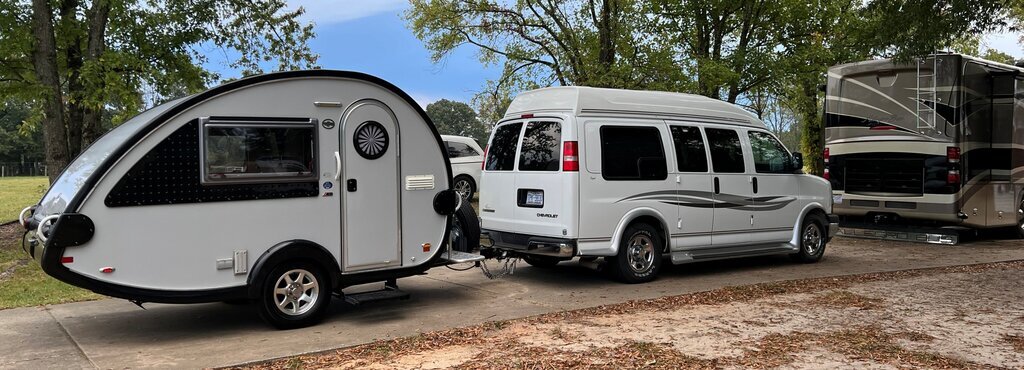Hi y'all!
Gil is having some medical issues and will be recuperating at home for a while.
I am not comfortable driving the big motorhome to the dog shows alone, so it will sit in the driveway until he is better.
For my birthday this month he gave me a wonderful present; a little used 2017 T@B 320S teardrop trailer in like new condition and a 180watt Zamp solar suitcase.
Now to the issue(s):
The trailer has ONE lead acid marine battery. I haven't attempted to use the Zamp system yet (and probably a good thing) because I have questions that the sales literature doesn't answer.
The trailer has a pre-wired solar plug that says it's solar ready.
I went on the Zamp website and saw a chart that shows the 180 watt suitcase depicted with a sample trailer that has TWO batteries. What will happen if I try to use this with ONE battery? I am afraid to try to use it now until I hear back from experienced folks. Is this too much wattage and will it damage the T@B?
If it IS ok to use, what is proper procedure? Do I have to unplug from shore power or is it ok to leave plugged in to 30 amp while solar charging?
Thanks for any light you can shed on this.
Dianne
Gil is having some medical issues and will be recuperating at home for a while.
I am not comfortable driving the big motorhome to the dog shows alone, so it will sit in the driveway until he is better.
For my birthday this month he gave me a wonderful present; a little used 2017 T@B 320S teardrop trailer in like new condition and a 180watt Zamp solar suitcase.
Now to the issue(s):
The trailer has ONE lead acid marine battery. I haven't attempted to use the Zamp system yet (and probably a good thing) because I have questions that the sales literature doesn't answer.
The trailer has a pre-wired solar plug that says it's solar ready.
I went on the Zamp website and saw a chart that shows the 180 watt suitcase depicted with a sample trailer that has TWO batteries. What will happen if I try to use this with ONE battery? I am afraid to try to use it now until I hear back from experienced folks. Is this too much wattage and will it damage the T@B?
If it IS ok to use, what is proper procedure? Do I have to unplug from shore power or is it ok to leave plugged in to 30 amp while solar charging?
Thanks for any light you can shed on this.
Dianne
Attachments
Last edited:


